Abstract
Cells obtained from mesenteric lymph nodes of highly inbred guinea-pigs (Heston strain) resistant to Trichostrongylus colubriformis were injected into virgin animals of the same genotype. The adoptively immunized recipients were challenged with 1000 T. colubriformis larvae 4 days after transfer and slaughtered at intervals which correspond to critical times in the development of the parasite. Differential worm counts carried out on specimens of intestine showed that a sharp decline in the number of parasites occurred between days 7 and 9. This period corresponds to the time required for the parasite to develop to the fourth larval stage.
Variation of the time interval between cell transfer and challenge showed that immune cells transferred on the day of challenge and on days 4, 6 and 8 after challenge inhibited the development of infection to patency, while cells injected on day 10 were without effect. This observation confirmed that the fourth larval stage of the parasite is uniquely susceptible to the immunological attack initiated by the transferred cells and showed that these cells are effective within 24–48 hours after injection. This latter finding excludes the possibility of active participation in the response by the recipient.
Resistance can be transferred by spleen cells and by cells obtained from lymph nodes other than the mesenteric nodes which drain the site of infection. However the local nodes are more effective and resistance was regularly transferred with as few as 10 × 106 cells injected intravenously.
Full text
PDF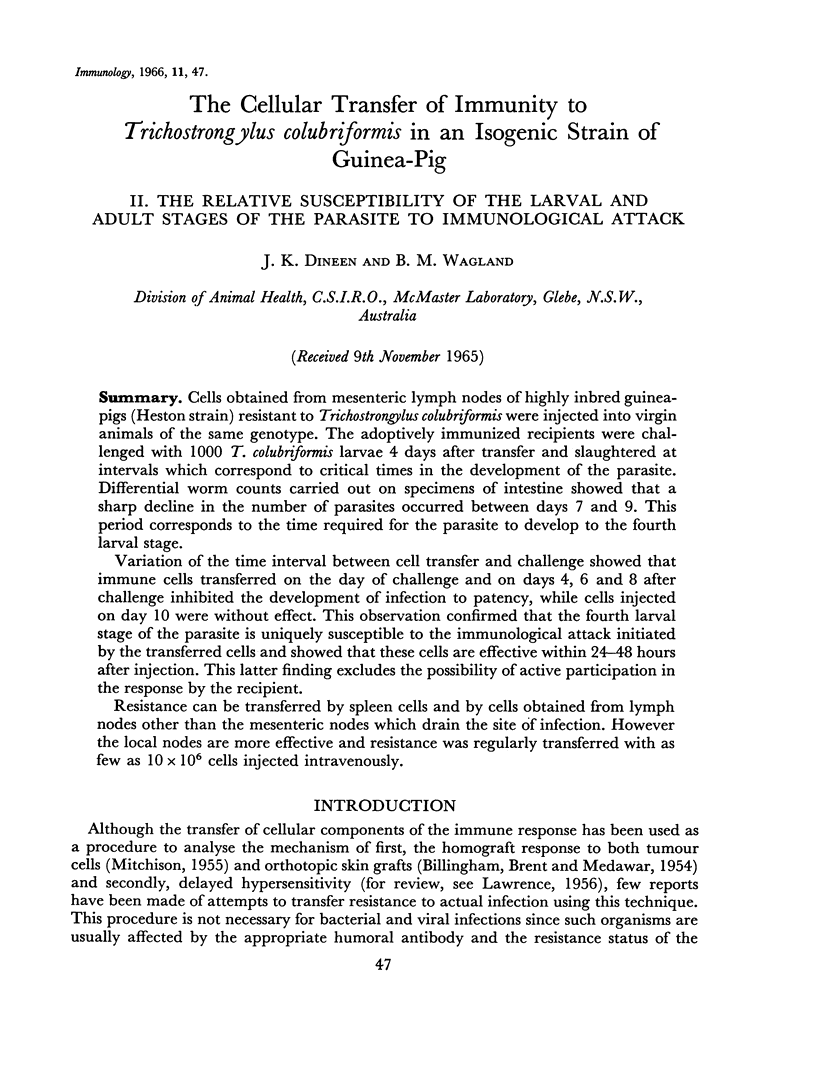
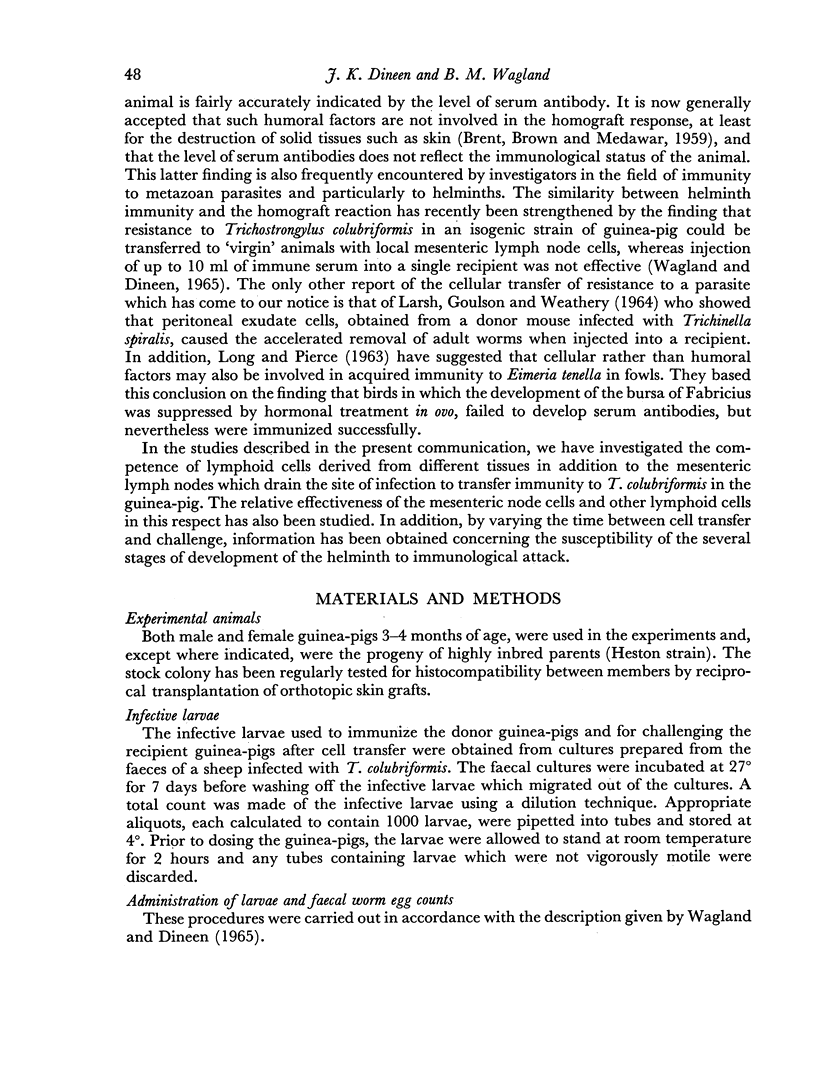
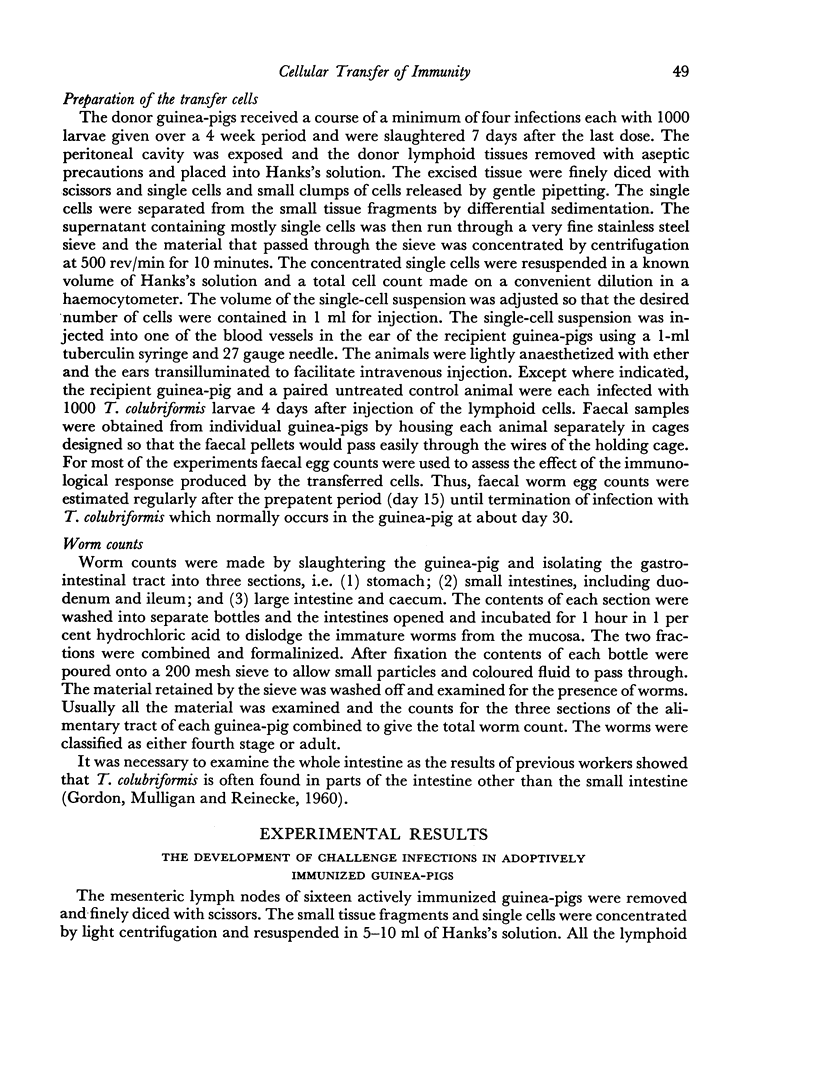
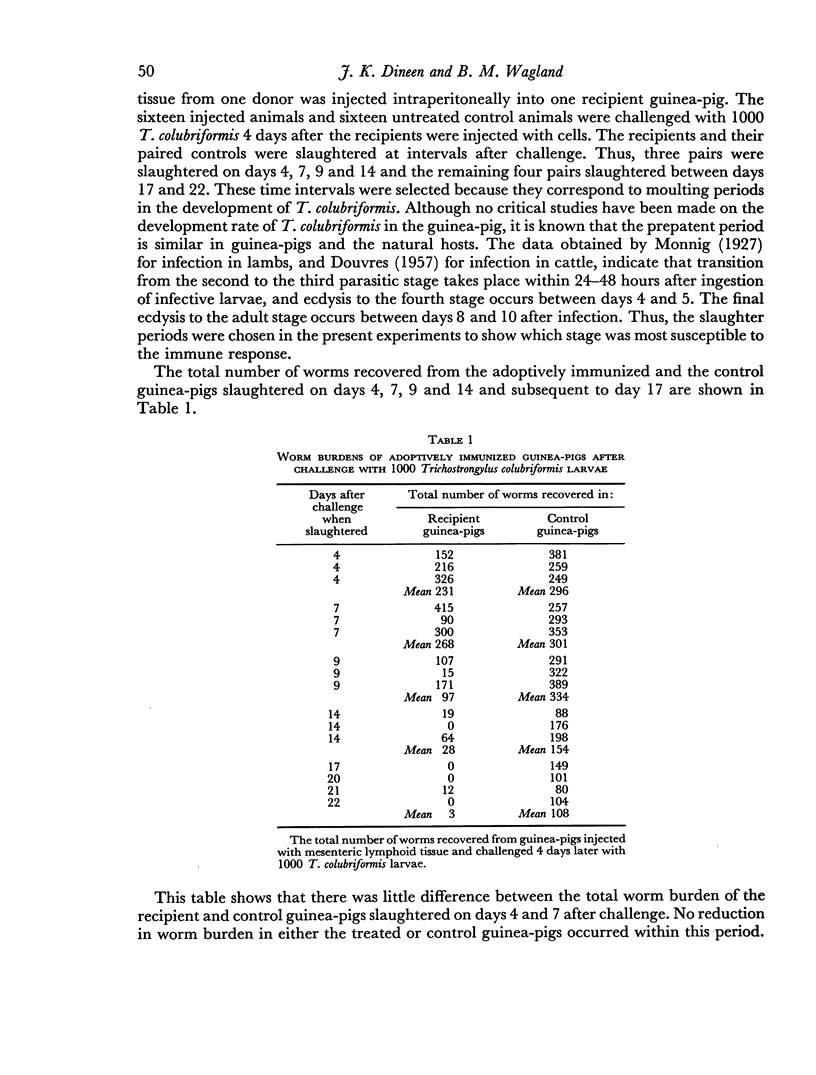
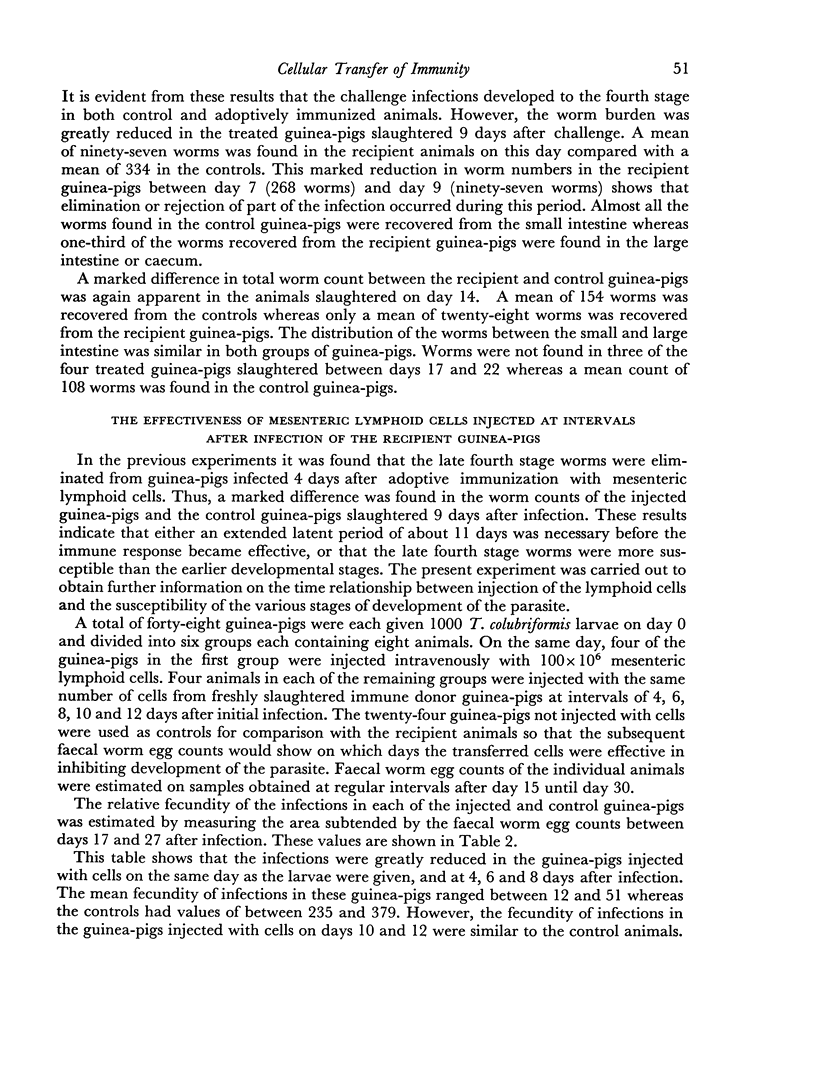
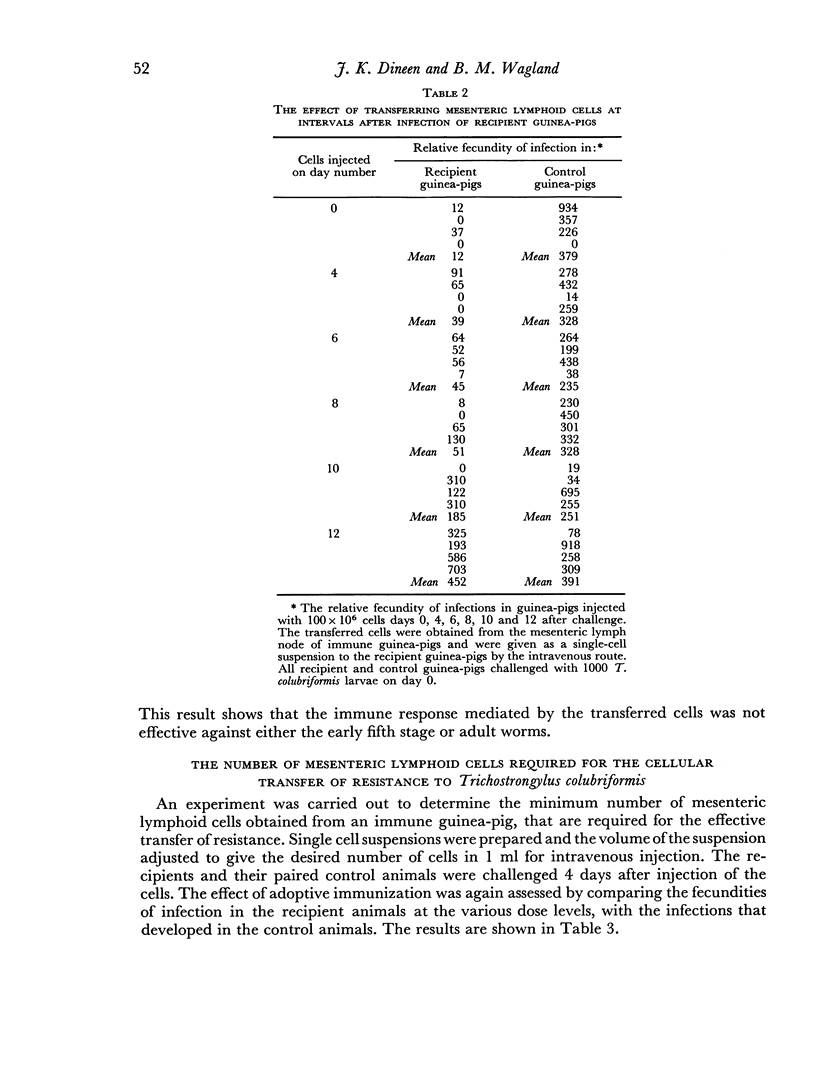
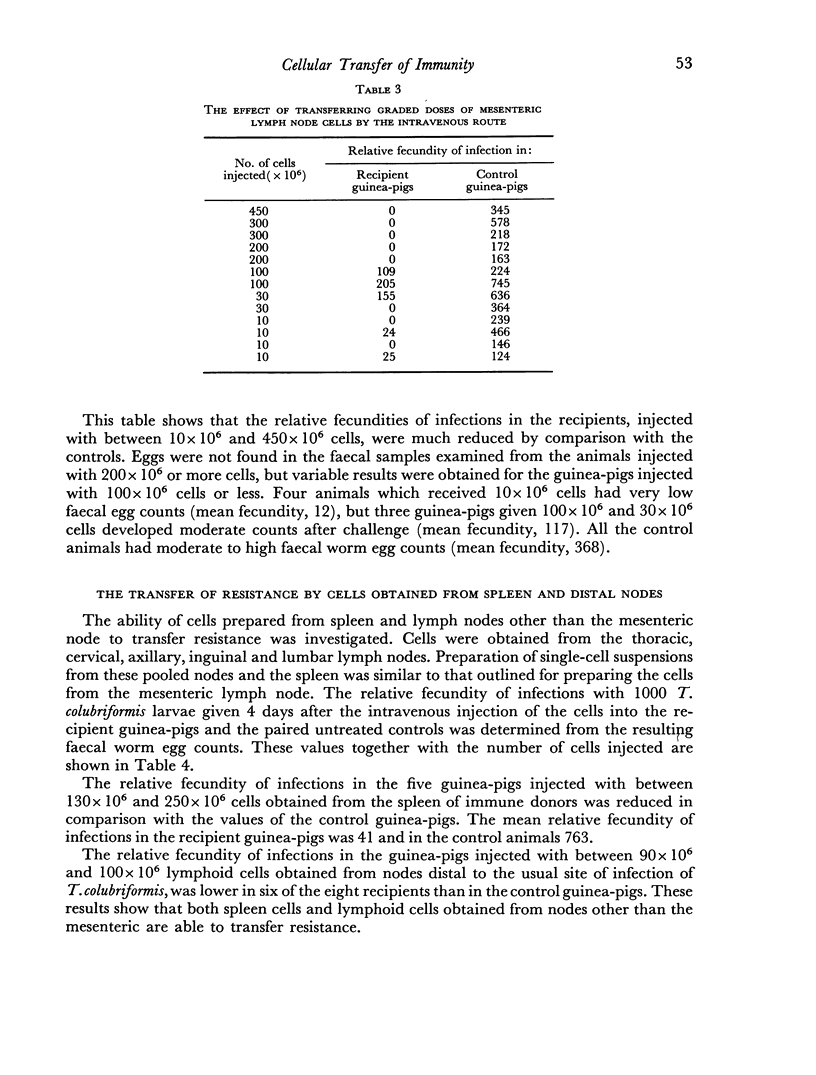
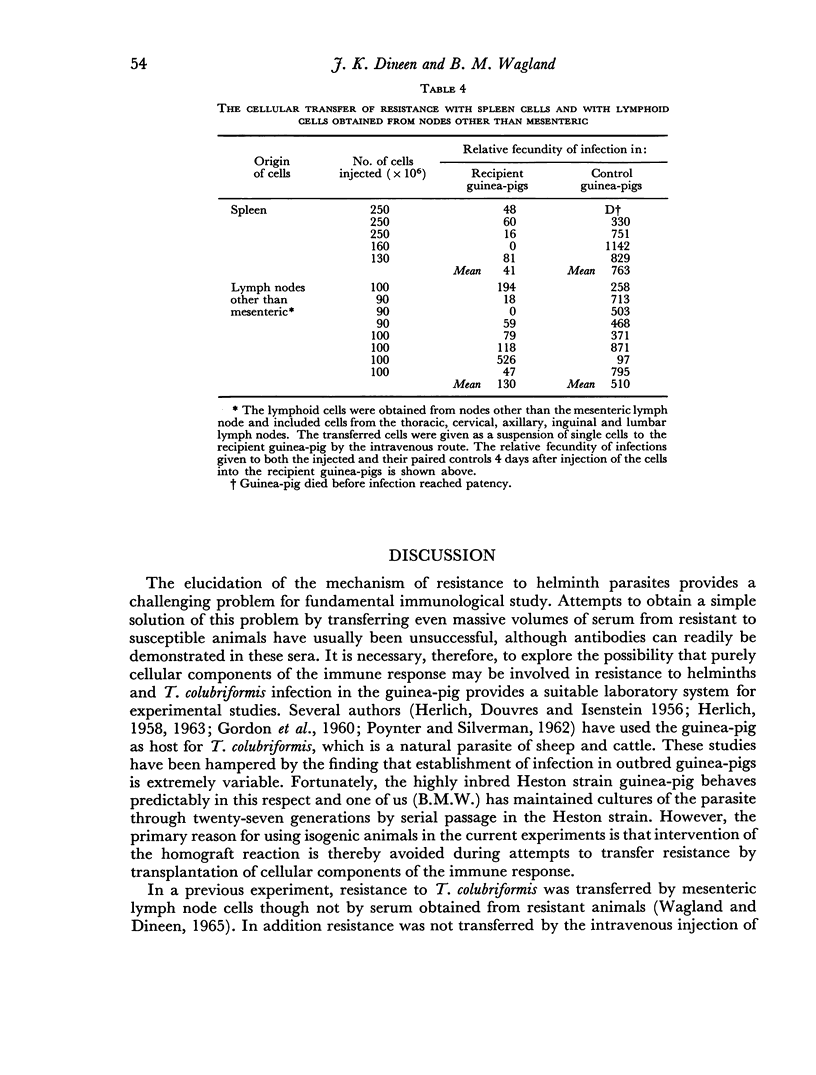
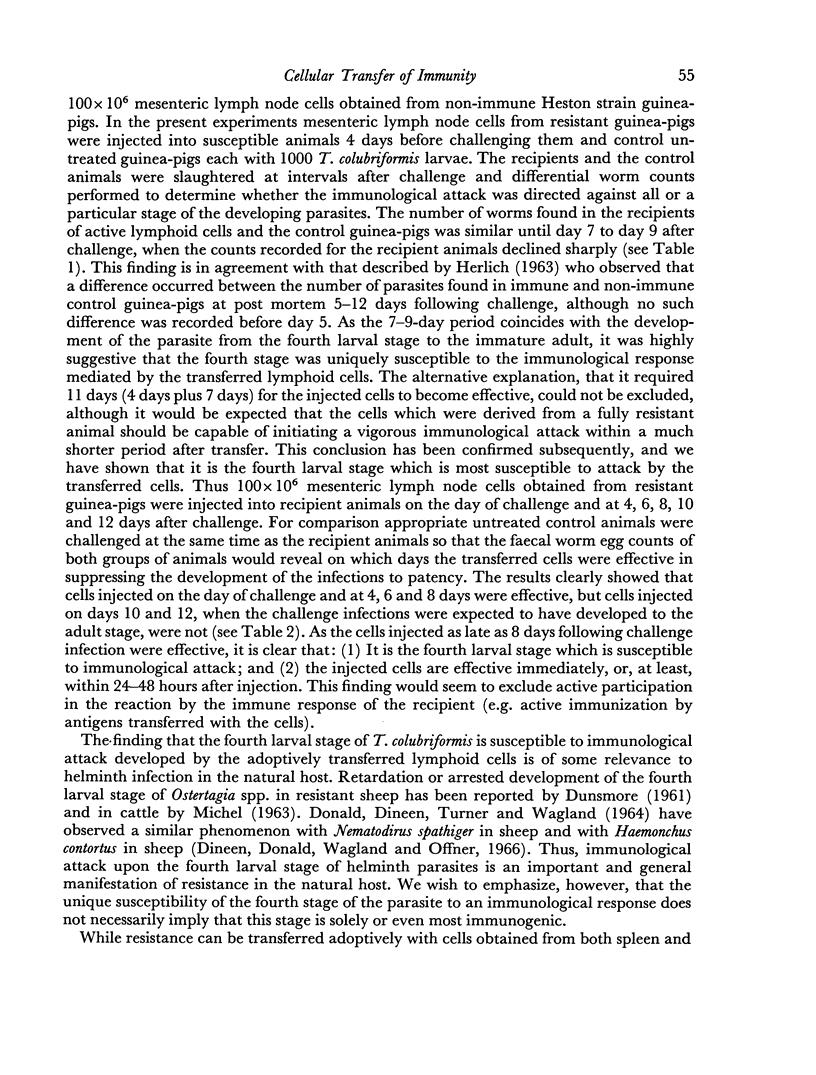
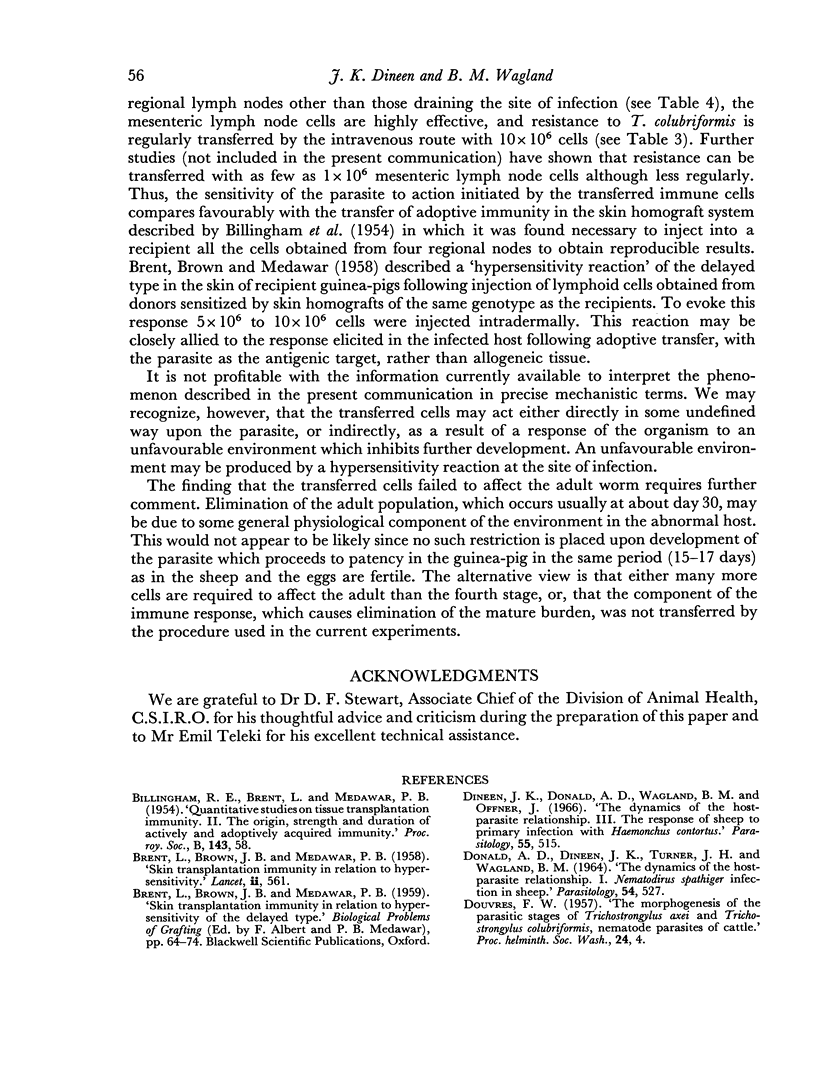
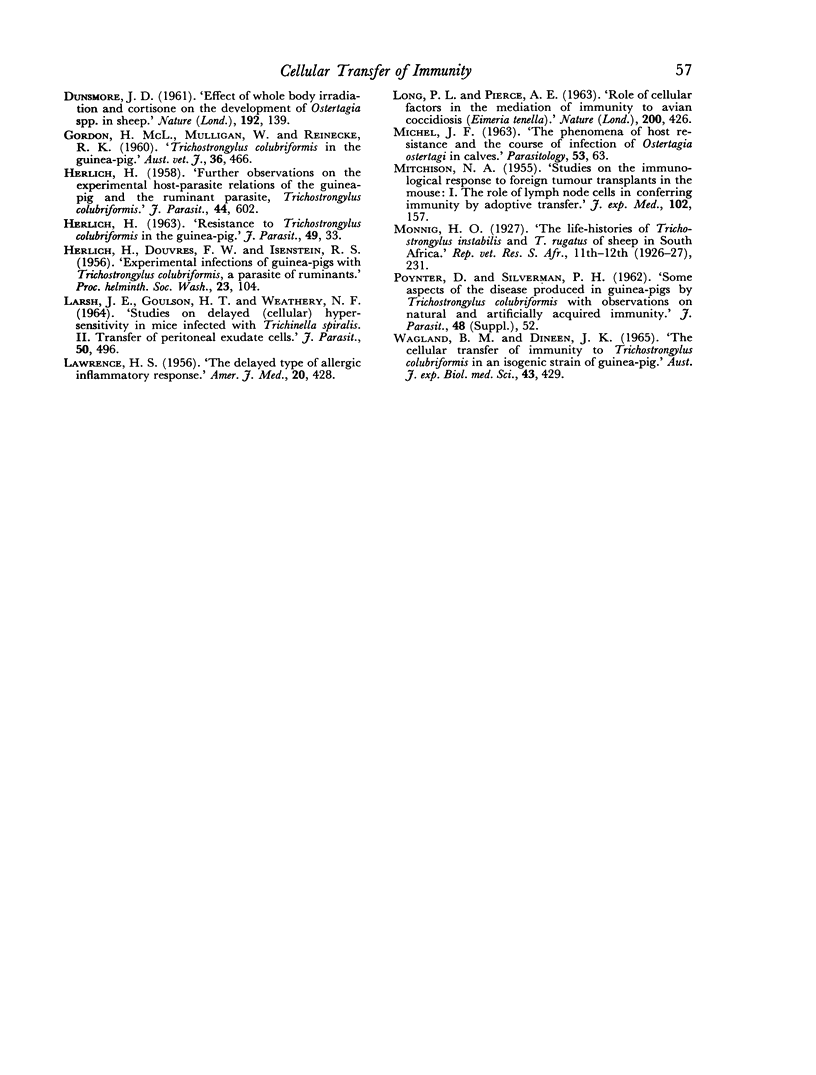
Selected References
These references are in PubMed. This may not be the complete list of references from this article.
- AGLAND B. M., DINEEN J. K. THE CELLULAR TRANSFER OF IMMUNITY TO TRICHOSTRONGYLUS COLUBRIFORMIS IN AN ISOGENIC STRAIN OF GUINES-PIG. Aust J Exp Biol Med Sci. 1965 Jul;43:429–438. doi: 10.1038/icb.1965.77. [DOI] [PubMed] [Google Scholar]
- BRENT L., BROWN J., MEDAWAR P. B. Skin transplantation immunity in relation to hypersensitivity. Lancet. 1958 Sep 13;2(7046):561–564. doi: 10.1016/s0140-6736(58)90202-2. [DOI] [PubMed] [Google Scholar]
- DONALD A. D., DINEEN J. K., TURNER J. H., WAGLAND B. M. THE DYNAMICS OF THE HOST-PARASITE RELATIONSHIP. I. NEMATODIRUS SPATHIGER INFECTION IN SHEEP. Parasitology. 1964 Aug;54:527–544. doi: 10.1017/s003118200008255x. [DOI] [PubMed] [Google Scholar]
- LARSH J. E., Jr, GOULSON H. T., WEATHERLY N. F. STUDIES ON DELAYED (CELLULAR) HYPERSENSITIVITY IN MICE INFECTED WITH TRICHINELLA SPIRALIS. II. TRANSFER OF PERITONEAL EXUDATE CELLS. J Parasitol. 1964 Aug;50:496–498. [PubMed] [Google Scholar]
- LAWRENCE H. S. The delayed type of allergic inflammatory response. Am J Med. 1956 Mar;20(3):428–447. doi: 10.1016/0002-9343(56)90128-0. [DOI] [PubMed] [Google Scholar]
- LONG P. L., PIERCE A. E. ROLE OF CELLULAR FACTORS IN THE MEDIATION OF IMMUNITY TO AVIAN COCCIDIOSIS (EIMERIA TENELLA). Nature. 1963 Nov 2;200:426–427. doi: 10.1038/200426a0. [DOI] [PubMed] [Google Scholar]
- MITCHISON N. A. Studies on the immunological response to foreign tumor transplants in the mouse. I. The role of lymph node cells in conferring immunity by adoptive transfer. J Exp Med. 1955 Aug 1;102(2):157–177. doi: 10.1084/jem.102.2.157. [DOI] [PMC free article] [PubMed] [Google Scholar]


